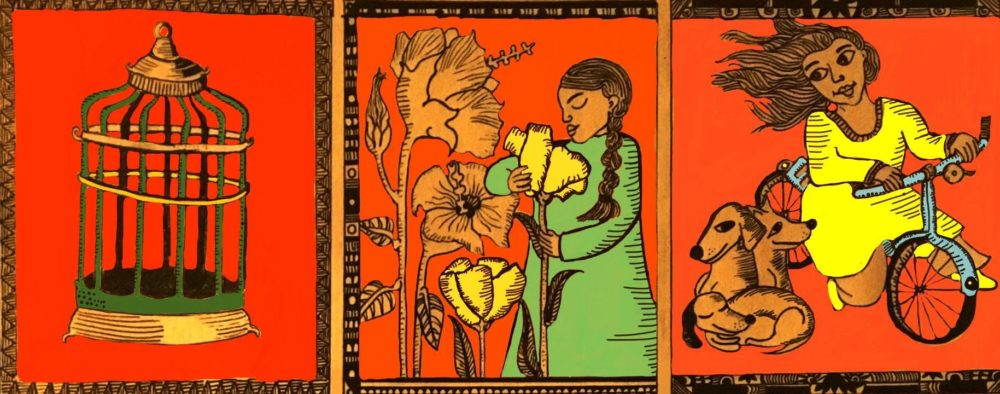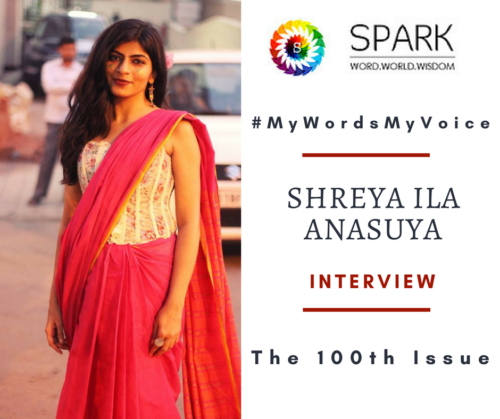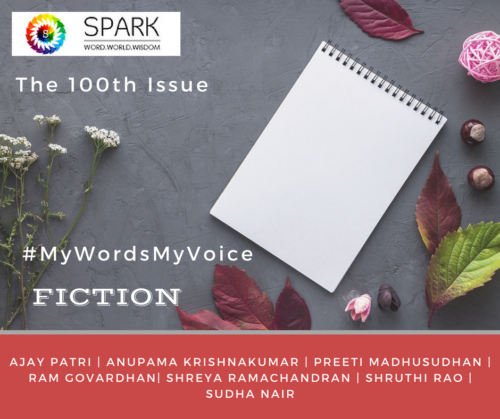by Vani Viswanathan
Thank you for doing this interview, Shreya. To start off, how did Skin Stories come about? What does it strive to convey, address, discuss?
Skin Stories started its life as the Sexuality and Disability blog at Point of View Mumbai’s programme of the same name. In the beginning, since we were focusing on strengthening other aspects of the programme, the blog only had one, then two writers. After I joined the team in August 2016, specifically to edit the Sexuality and Disability blog and other things, we focused on growing the publication. Things went unexpectedly well – so well, in fact, that we decided to make the weekly essay series a publication in its own right. We launched it as Skin Stories in August 2017.
The basic premise of the Sexuality and Disability programme at Point of View is that people with disabilities are sexual beings, just like anyone else. And this is exactly where Skin Stories starts too – with the idea that people living with physical disability, or difficult mental health, or chronic and debilitating illnesses are people, just like anyone else, and have desires and experiences that anyone else could have. Our core mandate is to look at the places where disability meets gender and sexuality, but this inevitably radiates outwards into many other issues – all kinds of relationships, where it is with oneself or with others, issues of access, discrimination, representation, and much more.
Sexuality – as a central aspect of being human – is never high on the list of what people deem ‘important’ for people with disabilities. We understand that many people with disabilities also internalise this idea. Given this, could you describe your experience sourcing narratives from people with disabilities regarding sexuality?
Our writers are at the centre of what we do. They tackle and de-mystify the often ridiculous assumptions about the lives of people with disabilities – including issues of sex and sexuality – and they do this in complex and diverse ways. Once we started putting the stories out and actively scouting for more writers to contribute, sourcing the stories was not a problem. In fact, the best thing about getting to edit Skin Stories is the process of editing itself – commissioning stories, receiving pitches, looking at first drafts, having conversations with the writers about edits, and bringing each story to finish line in a way that does justice to the story and its teller. I don’t think there has ever been a dearth of stories, it just depends on which direction you’re focusing on.
We see that the stories span physical and mental disabilities, mental illnesses and mental health. In this sense, the stories are a departure from the usual understanding of disability, which is often restricted to physical disabilities, or the idea of ‘madness’, institutionalization, etc. Is this a conscious approach, to ‘expand’ the popular discourse on disability and bring in other, less-discussed aspects of it? Or did this happen organically?
The stories are focused on physical disability, difficult mental health, as well as chronic illness and pain. I think the focus on mental health was always there, and I don’t think usual understandings of disability disregard issues of mental health at all. The one thing I did want to add was stories on chronic illness, since they can be very debilitating and there was space in the conversation to address this too.
The stories also feature people of diverse gender and sexual identities, engage with raw and honest ideas and experiences of sexual desire. The platform is giving space for conversations beyond sexual violence or marriage, which, while important with regard to persons with disabilities, are only a part of the dialogue around sexuality. Could you share some feedback that these stories have received?
One of our most popular stories is by a young queer woman who talks about living with PTSD – this story was written anonymously but has received waves of love and support from folks. Another one, by Antara Telang, looks at online dating as a young woman who is an amputee, yet another, written by our programme director Nidhi Goyal, busts myths about visual impairment and makes the important point that bodies are diverse and should be embraced as such. We hear from our readers via email, social media, and at events that we do. They respond to our monthly newsletter and share our stories every week.
We’ve received some absolutely wonderful feedback from our readers. But perhaps the most gratifying response has come from the teachers programme at Amnesty UK. Unbeknownst to us, they’ve been using our stories in schools in the UK and have sent word to us about how these have kickstarted important conversations around disability among the students.
Writing very personal narratives on disability and sexuality cannot be easy for the writer. I wonder if editing these is a tougher task! What has your experience been? What do you look out for when you edit these stories, and how do you work with the writer given the topics are often very sensitive?
After having edited Skin Stories in its various forms for over a year and a half, I recently wrote a Women’s Day Special editorial myself. Given that this is Skin Stories, the editorial also happened to be a personal essay, about my own experience of living with endometriosis, a chronic gynaecological illness that causes pain and fatigue. After this experience I can tell you with some certainty that it is far easier for me to edit the stories than it is for our writers to write them. I was so struck by how vulnerable this act of writing is – at the same time, I am very aware that it is this way because we devalue certain forms of knowledge collection. The personal essay is seen – especially when written by someone who is already socially marginalised – as somehow less important than say a report. But when people tell their own stories, especially when these stories are devalued and shrouded in myths and assumptions, it is a profoundly political act. It doesn’t become less political just because it isn’t a PhD dissertation or a news report!
I work closely with each writer. The idea is to preserve the writer’s voice instead of supplanting it with my own. It’s different with each writer – sometimes I will commission a story, sometimes someone will send me a pitch. Once the first draft comes to me I ask for edits and we go from there. At every stage we are mindful of the fact that these are personal stories and that the writer will share to the extent that they feel comfortable sharing. The final call is the writer’s, not ours.
The illustrations used in every story are arresting, touching, often poignant. What is the role of the visual in the evocative stories featured on Skin Stories?
Thanks for that excellent question. The art work is very important to Skin Stories. We have two wonderful, sensitive artists – Alia Sinha and Upasana Agarwal – who create a special illustration for every single story. I absolutely despise the grim and dehumanising visuals that a lot of our mainstream media uses to talk about issues of social importance, and our aim with Skin Stories (and if you look at Point of View’s other programmes, in general) is to do the opposite of that. Our visuals are colourful, vibrant, and above all, they are human. They don’t always directly interpret the story, but most often act as companions to the text. And our text descriptions, which we add to make the visuals accessible to everyone, stay faithful to these depictions. The descriptors also don’t assume the gender identity of the person depicted in the illustration – this is part of Skin Stories’ editorial policy.

The image is a triptych with a red background. In the first panel, there is a green and gold cage. In the second, a woman with braided hair smells giant flowers. In the third, the woman sits on a bicycle, her hair flying, and three dogs snuggled next to her. Credit: Alia Sinha for Skin Stories.
How has editing Skin Stories affected you personally? What would you say you have learnt?
It has taught me everything I know about disability. It has taught me so much more than I knew about gender and sexuality. It has taught me so, so much about editing, writing, and story-telling. Above all, it has taught me to be intimate with the Story and be very aware of the politics around this – who can tell the Story, who will receive it and how, etc. In short, it has expanded my heart and mind in ways I could not have imagined before.
What plans do you have for Skin Stories in 2018? Any plans to expand the formats or languages the content is available in?
We have some big plans for Skin Stories in 2018 that I unfortunately can’t reveal just yet. What I can say is that we are aiming to make sure these stories reach many more people than they already have, and are accessible and diverse in the ways they need to be.
Finally, our best wishes to you and the team! We hope you are able to continue bringing forth untold stories, and more in the coming years.
Many, many thanks!






